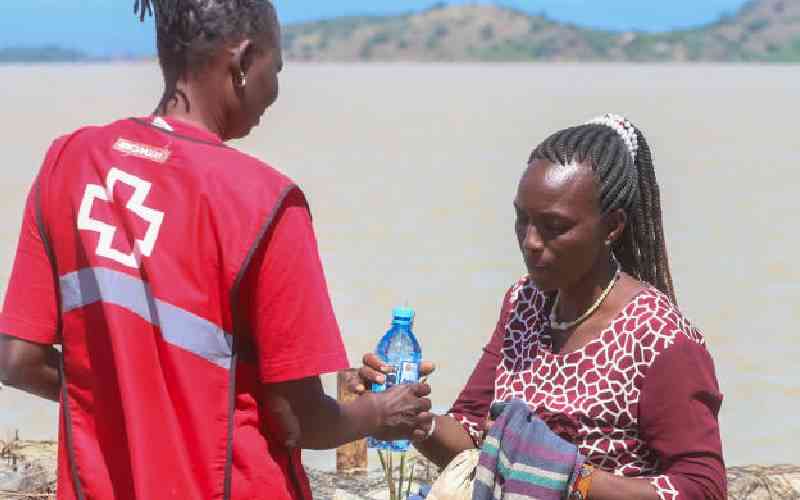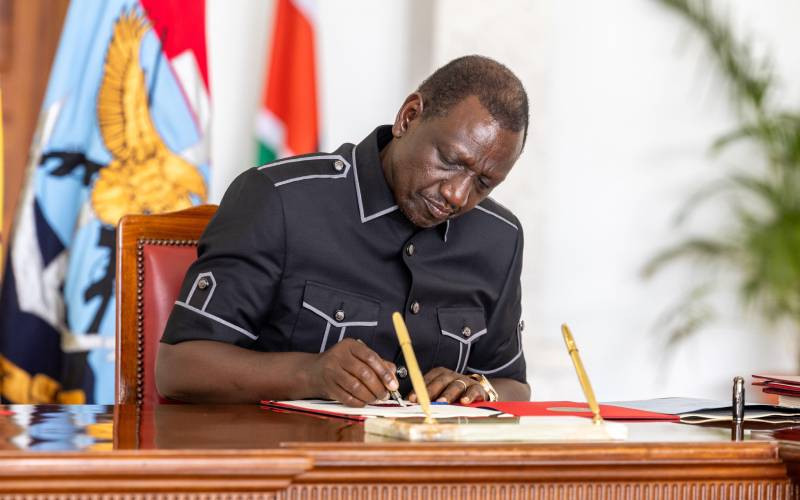By THE Standard on SUNDAY TEAM
Rival theories of the Federal Bureau of Investigations involvement in foiling the Mombasa terror attack abound with reports that the Americans had been on a separate counter-terrorism operation in Kinango, Kwale, when they accidentally picked a signal of a live bomb on their counter during a routine call on Mombasa County Commissioner Nelson Marwa on March 17. Subsequent searches uncovered the weapons.
Another theory indicates that an FBI Communication Intelligence Unit had been tracking the car from a signal emitted by one of the suspects’ cell phone for weeks after intercepting their communication with designated Al Shabaab cell members in the Gedo region of Somalia when the suspects drove into Mandera through Garissa. Some accounts suggest the car borne improvised explosive device was partially assembled in Dadaab, Garissa.
According to the second theory, the Americans lost the cell phone signal when the car approached Mombasa and were trying to alert the Kenyan police about a suspicious car when they suddenly stumbled upon the bomb signal.
It is not clear when the suspects crossed the border or how many they were. Security sources within Kenya’s intelligence admit that they had been independently tracking the cell phones of the two suspects when they got to Garissa. They monitored this phone signal on the way to Mombasa, a journey that took a day with stops in Hola, Garsen, Malindi and Mtwapa before the signal was lost for several days. The signal was retraced in early March in Changamwe.
Major breakthrough
The Kenyans say one of the men arrested had repeatedly spoken to the suspected mastermind of the September 21, 2013 Westgate Mall terror attack using three separate cell phones with numbers from Kenyan mobile phone networks. These calls were placed from inside Somalia during the Westgate raid.
Mombasa County police commander Robert Kitur denies the theory that they were caught totally unaware by the suspects.
“We had been monitoring and tracking the suspects for sometime and immediately they were arrested we shared the information with the Americans,” he said. Kitur said that even before the Americans arrived, they had began searching the vehicle “because we suspected it had explosives”.
“The Americans arrived when we were already searching it (the vehicle).”
Yesterday, Interior Cabinet Secretary Joseph ole Lenku met top security chiefs from Coast’s six counties to discuss Monday’s discovery of the massive car bomb whose finding has been hailed as a major breakthrough by Kenya’s anti-terrorism agencies.
But Lenku’s body language betrayed dissatisfaction with the many unanswered questions, beginning with where the bomb was assembled and transported into the heart of the Mombasa police headquarters undetected until an alleged accidental discovery by the FBI.
“We have launched a comprehensive investigation and we shall make the findings public,” he said.
The two terror suspects charged with possessing six explosive cylinders first appeared in a Mombasa court on March 12, a day after their arrest in Changamwe. The prosecution asked the court to remand them for five more days, indicating that police were investigating the two for other crimes besides the initial charges of possessing uncustomed goods and forgery of vehicle documents.
When the five days lapsed on March 17, Abdiaziz Abdi Abdulahi and Isaak Noor Ibrahim were brought to court where they denied charges of being in possession of uncustomed goods.
Stay informed. Subscribe to our newsletter
However, Corporal Barisa Abaroba, who was prosecuting, said the suspects were suspected to be plotting “a heinous crime” in Kenya. “I have information that the suspects are connected to an organised criminal group, namely Al Shabaab,” said Abaroba.
Mombasa Senior Principal Magistrate Richard Odenyo granted the police seven more days.
The duo denied that on March 11, 2014 with others not before the court, they were found in possession of uncustomed vehicle chassis number KZN130-30-20660880, a Toyota Surf dark green worth Sh1,646,241. They also denied that they had sought to make car registration plates.
And on March 18, they faced fresh charges of being in possession of six cylinders with explosives, an AK47 rifle, 270 bullets, five grenades. They also denied that they are members of the Al Shabaab terror group.
The investigation acquired a new twist after the suspects were remanded on Monday after an inspection of the car they were arrested in.
The car which was parked at the Mombasa County police headquarters was discovered to have guns, grenades, bullets and six cylinders filled with TNT.
Reporting by Bernard Sanga, Stanley Mwahanga, Willis Oketch and David Ochami.
 The Standard Group Plc is a
multi-media organization with investments in media platforms spanning newspaper
print operations, television, radio broadcasting, digital and online services. The
Standard Group is recognized as a leading multi-media house in Kenya with a key
influence in matters of national and international interest.
The Standard Group Plc is a
multi-media organization with investments in media platforms spanning newspaper
print operations, television, radio broadcasting, digital and online services. The
Standard Group is recognized as a leading multi-media house in Kenya with a key
influence in matters of national and international interest.
 The Standard Group Plc is a
multi-media organization with investments in media platforms spanning newspaper
print operations, television, radio broadcasting, digital and online services. The
Standard Group is recognized as a leading multi-media house in Kenya with a key
influence in matters of national and international interest.
The Standard Group Plc is a
multi-media organization with investments in media platforms spanning newspaper
print operations, television, radio broadcasting, digital and online services. The
Standard Group is recognized as a leading multi-media house in Kenya with a key
influence in matters of national and international interest.








